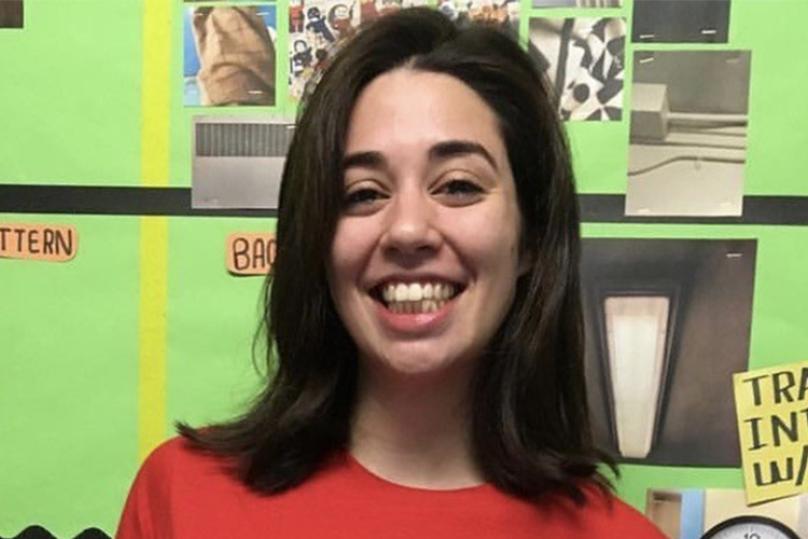
By MƒA Master Teacher Estefania Hereira
“Why has it taken so long?”
A student I recently spoke with wondered why he had to be the one to start the conversation about racism in his school.
As an educator that identifies as a White Latina, I believe we can do more to address and validate the experiences that our students - especially students of color - face on a daily basis. Educators need to see their students through a holistic lens by listening to them, creating spaces for them to process events that are happening in their communities, and providing a place where they can deconstruct the policies that work to oppress them.
Last year, the onslaught of COVID-19 led to the vilification and violent assault of Asian Americans blamed for a pandemic that has disproportionately impacted communities of color. Furthermore, we as a nation bore witness to the injustices and violence against George Floyd, Breonna Taylor, and countless others due to the color of their skin. We also witnessed migrant families being ripped apart at the Mexican border. With all the injustices that our students are experiencing and witnessing, how often, as educators, do we make space and time in our classrooms to share these vulnerable parts of our lives with our colleagues and students? As difficult as the topics are to discuss, I believe, as educators, we should engage in these conversations with our colleagues and students more often and consistently, especially now.
I often struggle with knowing how and when to have conversations about racism and systems of oppression with my students. However, this semester I made a commitment to them, to work and fight alongside them against racism inside and outside of the classroom.
My first concrete step in honoring this commitment was designing a project where students created data graphics that exposed disproportionalities among communities of color with regard to issues that students found relevant to themselves. One of my students created a data graphic on police brutality using data that showed the number of police shootings in the US. When I expressed the police brutality data mathematically, I focused solely on the numbers and found myself repeating the phrase, “Black people shot to death by the police,” not realizing that I was disregarding how each number represented a human being. I felt I normalized the murder of black bodies by not speaking about the life behind the numbers. I also did not ask or create a space for my students to talk about their feelings that may have come up during the project. From this experience I came to realize that STEAM educators shouldn’t shy away from an activity that would normally be done in humanities; journaling, poetry, and stories can be embedded into the math classroom to humanize those numbers.
Educators need to see their students through a holistic lens by listening to them, creating spaces for them to process events that are happening in their communities, and providing a place where they can deconstruct the policies that work to oppress them.
In the past, I would feel stuck and unsure of how to address this; I’d even avoid it, or claim there was no time to discuss it. This time, however, I had made a commitment to my students, and I took the opportunity to initiate a conversation with both my co-teacher and my students to acknowledge my shortcomings and to establish a community of mutual care and empathy. During that conversation, my students reflected on the emotions that came up for them during the project. One Latinx student shared, “Even though my race isn’t the one that's being killed the most, I feel the pain that Black people feel.” A Black student also reflected, “I felt a sigh of relief, I am finally able to say something about everything going on.” At this moment, leaning into vulnerability resulted in a valuable teachable moment for both my students and me.
A few weeks after having the conversations with my students, I co-facilitated an MƒA virtual workshop on racial equity. My co-facilitator and I felt like this was an opportunity to empower our students to be a part of the conversation and engage in the discussion on how schools can better address racial inequities. Finding opportunities for our students to speak up and be the authority on their experiences could be a way for students to engage in these conversations outside of their classrooms while building relationships with others. After the workshop, we debriefed with the students about the experience. They initially felt the conversation was one-sided, questioning whether the educators present were actively listening or even cared. I shared the educators’ written takeaways about what they learned from the students’ conversations. After reading this, the students appreciated learning that their thoughts were well received and were hopeful that their feedback would result in meaningful change.
Students often want to give honest feedback but don’t know how without educators becoming defensive. Educators are in a position of power and we need to learn how to subvert that power dynamic that can potentially silence our students. We do not need to be the only knowledgeable ones; we can learn alongside our students. Educators need to embrace being challenged by students and take it as part of the process to grow stronger relationships with them.
My students model what needs to be done among my peers by explicitly naming racism and challenging existing policies that enable it. I’ve learned that I need to continue to have difficult and intense conversations with my peers and students about race, as well as other intersectional identities. In order to have these conversations, I need to be willing to identify and unlearn my own internalized racism and biases in and beyond the classroom. Processing my own identities and experiences has taught me that we can't ask students to reflect on their identities if we don't do the same. In order to do anti-racist work, we need to be vulnerable and we have to do this alongside others in our school communities, outside of our schools, and also here at Math for America.
